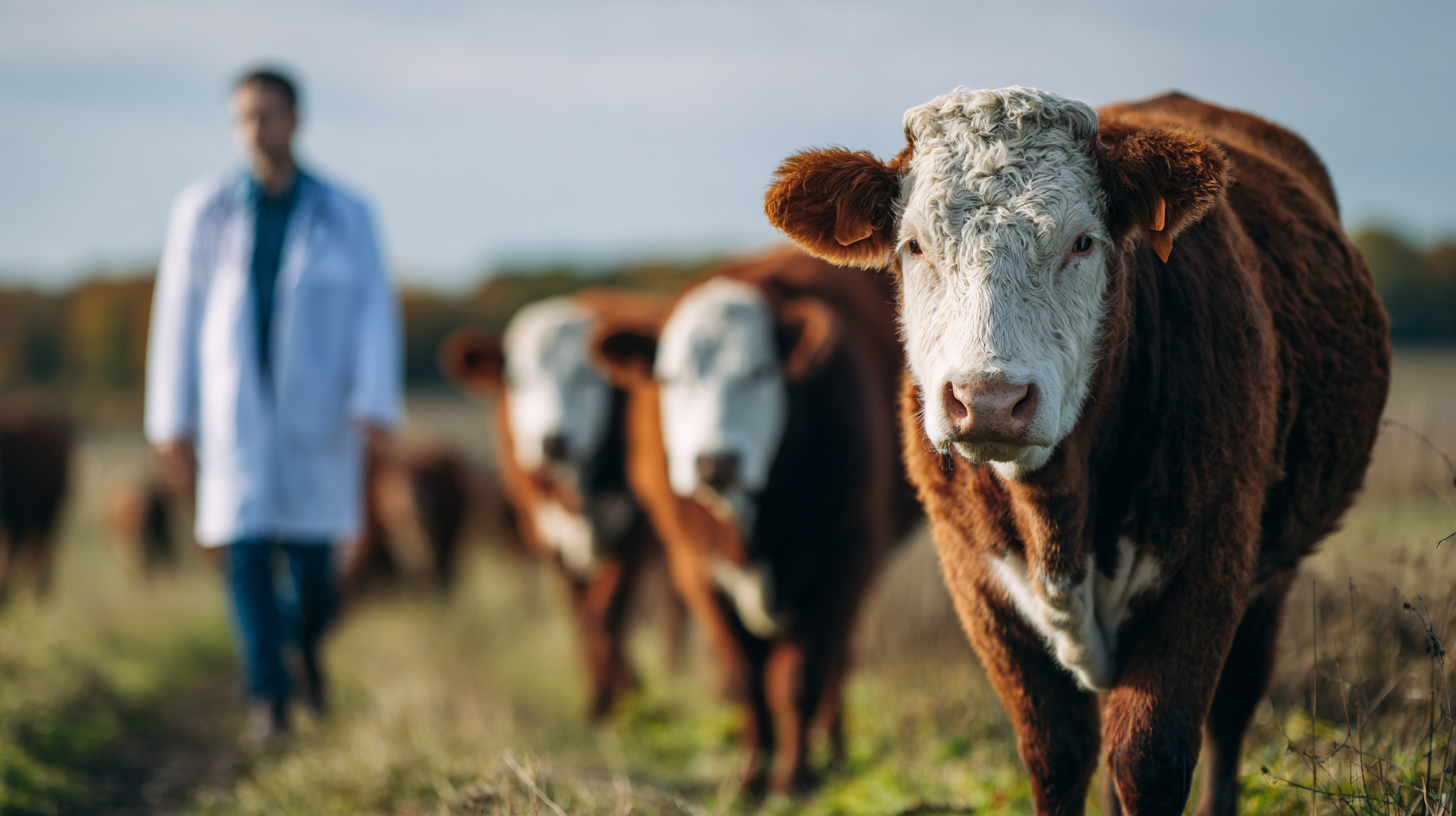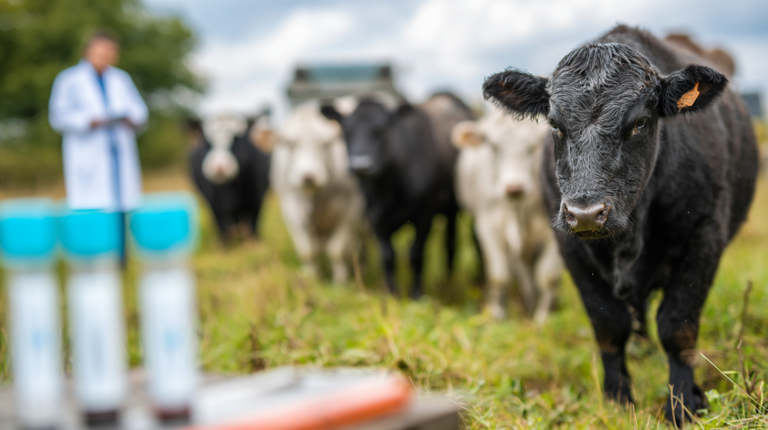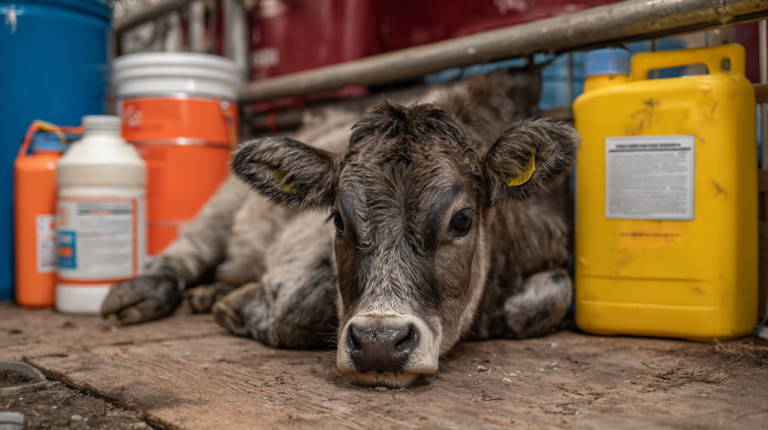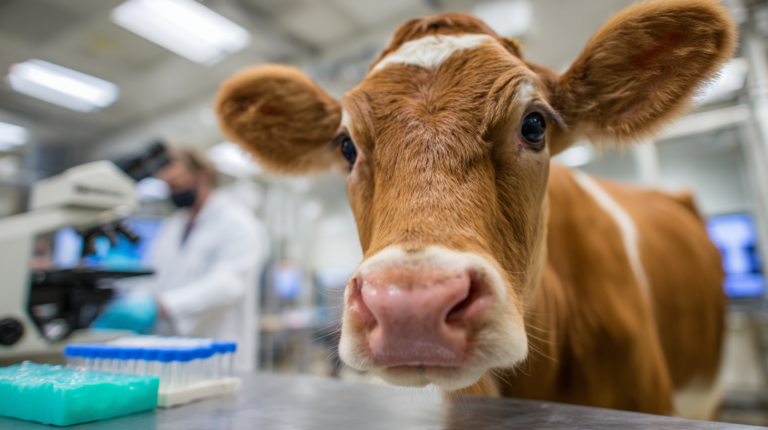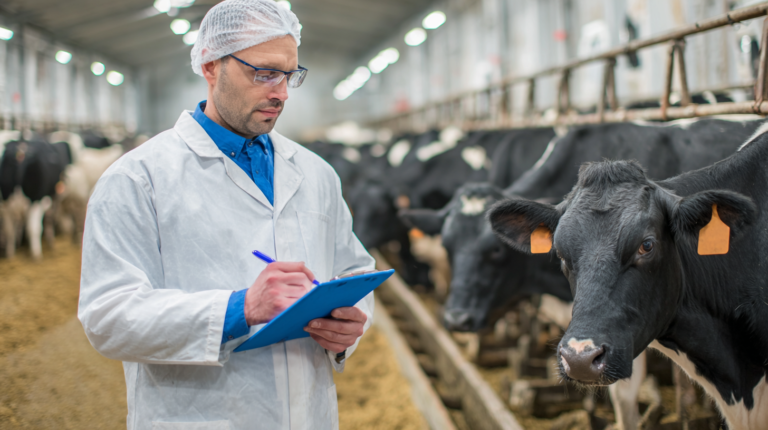Discover essential facts about clostridial diseases in cattle, including symptoms, prevention, and treatment options. Expert veterinary insights for livestock owners.
Table of Contents
When it comes to livestock health, few conditions strike as quickly or devastatingly as clostridial diseases in cattle. These bacterial infections, caused by various species of Clostridium bacteria, can transform healthy animals into critically ill patients within hours. For cattle ranchers, dairy farmers, and livestock enthusiasts, understanding these diseases isn’t just beneficial—it’s essential for maintaining herd health and preventing catastrophic losses.
Clostridial diseases in cattle represent a group of acute, often fatal conditions that affect cattle worldwide. These anaerobic bacteria thrive in oxygen-free environments and produce potent toxins that can cause severe tissue damage, systemic illness, and death. From the sudden onset of blackleg to the devastating effects of enterotoxemia, these diseases demand immediate attention and preventive measures.
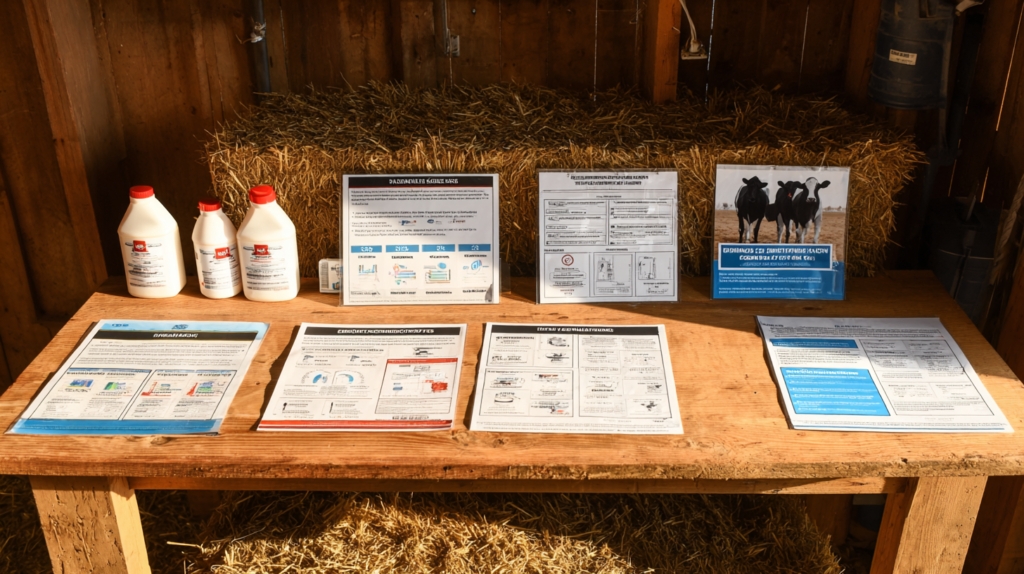
The economic impact of clostridial infections extends far beyond individual animal losses. According to veterinary epidemiological studies, these diseases can result in mortality rates exceeding 90% in untreated cases, making prevention through vaccination and proper management practices absolutely crucial for sustainable cattle operations.
| Disease Name | Causative Agent | Primary Symptoms | Onset Speed | Mortality Rate |
|---|---|---|---|---|
| Blackleg | Clostridium chauvoei | Sudden lameness, muscle swelling, crepitation | 12-24 hours | Nearly 100% |
| Malignant Edema | Clostridium septicum | Extensive tissue swelling, toxemia, fever | 24-48 hours | 80-90% |
| Enterotoxemia | Clostridium perfringens | Sudden death, diarrhea, abdominal pain | 6-12 hours | 90-95% |
| Tetanus | Clostridium tetani | Muscle rigidity, spasms, difficulty eating | 3-21 days | 80-100% |
| Braxy | Clostridium septicum | Acute abdominal pain, rapid deterioration | 12-36 hours | Nearly 100% |
Understanding the Clostridial Threat: What Every Cattle Owner Must Know
Clostridial diseases in cattle encompass a broad spectrum of bacterial infections that share common characteristics but manifest in distinctly different ways. These gram-positive, spore-forming bacteria are ubiquitous in soil, water, and the digestive tracts of healthy animals, making complete avoidance impossible. However, under specific conditions—such as tissue trauma, dietary changes, or immune suppression—these normally harmless bacteria can multiply rapidly and produce life-threatening toxins.
The pathogenesis of clostridial diseases involves the transformation of dormant spores into active, vegetative bacteria when environmental conditions become favorable. This process typically occurs in anaerobic environments created by tissue damage, sudden dietary changes, or compromised intestinal barriers. Once activated, these bacteria produce various toxins that cause extensive tissue necrosis, vascular damage, and systemic toxicity.
Understanding the epidemiology of these diseases is crucial for effective prevention. Clostridial spores can survive in soil for decades, creating persistent environmental reservoirs. Young animals are particularly susceptible due to their developing immune systems and exposure to contaminated environments. Stress factors such as transportation, weaning, dietary changes, and concurrent diseases can significantly increase susceptibility by compromising the animal’s natural defenses.
The clinical presentation of clostridial diseases varies significantly depending on the specific bacterial species involved, the affected organ systems, and the animal’s immune status. However, most cases share common features including rapid onset, severe systemic illness, and high mortality rates without prompt intervention. Early recognition and immediate treatment are essential, as delays of even a few hours can mean the difference between recovery and death.
The Big Five: Major Clostridial Diseases Affecting Cattle
Blackleg (Clostridium chauvoei)
Blackleg stands as one of the most recognizable and feared clostridial diseases in cattle. This acute, highly fatal condition primarily affects young cattle between 6 months and 2 years of age, though cases can occur in older animals under stress conditions. The disease typically manifests as severe myonecrosis, characterized by the distinctive crackling sensation (crepitus) felt under the skin due to gas production by the bacteria.
The pathophysiology of blackleg involves the activation of C. chauvoei spores within muscle tissue, often triggered by minor trauma or muscle strain. Once activated, the bacteria multiply rapidly and produce potent toxins that cause extensive muscle necrosis and systemic toxicity. Affected animals typically show sudden onset of severe lameness, high fever, and rapid deterioration. The characteristic “blackleg” lesions appear as swollen, painful areas that eventually become cold and insensitive due to tissue death.
Clinical signs of blackleg include severe lameness affecting one or more limbs, high fever (often exceeding 106°F), depression, loss of appetite, and rapid breathing. The affected limb becomes swollen and painful initially, but as the disease progresses, the tissue becomes cold and insensitive. A crackling sound (crepitus) can be heard and felt when pressure is applied to the affected area, indicating gas production within the tissues.
Prevention of blackleg relies heavily on vaccination programs using multivalent clostridial vaccines. These vaccines should be administered according to veterinary recommendations, typically starting at 2-3 months of age with annual boosters. Environmental management also plays a crucial role, including proper wound care, avoiding unnecessary trauma during handling, and maintaining good nutritional status to support immune function.
Malignant Edema (Clostridium septicum)
Malignant edema represents another serious clostridial infection that can affect cattle of all ages. Unlike blackleg, which primarily targets muscle tissue, malignant edema typically develops at wound sites, injection sites, or areas of tissue trauma. The disease is characterized by severe local swelling, toxemia, and rapid progression to systemic illness.
The bacterial pathogen C. septicum is particularly opportunistic, taking advantage of any breach in the skin or mucous membranes to establish infection. Common predisposing factors include castration wounds, dehorning sites, injection injuries, and obstetrical trauma. The bacteria produce powerful toxins that cause extensive tissue necrosis and vascular damage, leading to the characteristic edematous swelling.
Clinical presentation of malignant edema includes severe swelling around wound sites, which initially appears hot and painful but becomes cold and insensitive as tissue death progresses. Affected animals show signs of systemic toxicity including fever, depression, loss of appetite, and rapid breathing. The swelling has a characteristic “pitting” quality, where pressure applied to the area leaves a temporary indentation.
The prognosis for malignant edema is generally poor once clinical signs develop, emphasizing the critical importance of prevention. Proper wound care, sterile injection techniques, and timely treatment of injuries are essential preventive measures. Vaccination against C. septicum is typically included in multivalent clostridial vaccines and should be maintained according to veterinary recommendations.
Enterotoxemia (Clostridium perfringens)
Enterotoxemia, caused by various types of C. perfringens, represents a particularly devastating form of clostridial disease that affects the digestive system. This condition, also known as “overeating disease” or “pulpy kidney disease,” occurs when normal gut bacteria proliferate excessively and produce lethal toxins that cause severe intestinal damage and systemic toxicity.
The pathogenesis of enterotoxemia involves disruption of normal gut flora balance, often triggered by sudden dietary changes, high-grain diets, or stress factors. When conditions become favorable, C. perfringens bacteria multiply rapidly in the intestinal tract and produce toxins that cause severe inflammation, intestinal wall damage, and absorption of toxic substances into the bloodstream.
Different types of C. perfringens (Types A, B, C, D, and E) cause varying clinical presentations. Type A typically causes mild diarrhea in young calves, while Type C can cause severe hemorrhagic enteritis with high mortality rates. Type D produces the classic “pulpy kidney” syndrome, characterized by rapid death with minimal clinical signs.
Clinical signs of enterotoxemia vary depending on the bacterial type involved but commonly include severe diarrhea (often bloody), abdominal pain, dehydration, and rapid deterioration. In acute cases, animals may be found dead without prior clinical signs, highlighting the rapid progression of this disease. Survivors may show signs of chronic intestinal damage including poor growth rates and recurring digestive issues.
Prevention of enterotoxemia focuses on dietary management and vaccination. Gradual dietary transitions, avoiding sudden changes in feed composition, and maintaining consistent feeding schedules help prevent gut flora disruption. Vaccination against relevant C. perfringens types should be implemented according to veterinary recommendations, with particular attention to high-risk periods such as weaning and feed changes.
Tetanus (Clostridium tetani)
While less common than other clostridial diseases, tetanus remains a significant concern for cattle operations, particularly in areas with contaminated environments or following surgical procedures. C. tetani spores are ubiquitous in soil and animal feces, making exposure virtually inevitable for pastured cattle.
The unique pathophysiology of tetanus involves the production of tetanospasmin, a powerful neurotoxin that affects the nervous system rather than causing local tissue damage. This toxin blocks inhibitory neurotransmitter release, leading to sustained muscle contractions and the characteristic “stiff” appearance of affected animals.
Clinical signs of tetanus include progressive muscle stiffness, difficulty eating and drinking, hypersensitivity to noise and touch, and the characteristic “sawhorse” stance with extended legs and arched back. The incubation period can range from a few days to several weeks, depending on the wound location and bacterial load.
Prevention of tetanus relies on proper wound management, vaccination in high-risk situations, and maintaining clean environments. Tetanus toxoid vaccination is typically recommended for valuable breeding animals and those at increased risk due to management practices or environmental factors.
Braxy (Clostridium septicum)
Braxy, primarily affecting young cattle in certain geographic regions, represents a specific manifestation of C. septicum infection involving the abomasum (fourth stomach). This condition typically occurs in animals grazing frosted or frozen pastures, where the ingestion of cold, damaged plant material may predispose to bacterial invasion of the abomasal wall.
The pathogenesis involves bacterial invasion of the abomasal mucosa, often facilitated by damage from ingested plant material or stress factors. The bacteria produce toxins that cause severe inflammation and necrosis of the abomasal wall, leading to systemic toxicity and rapid death.
Clinical signs of braxy include sudden onset of severe abdominal pain, bloating, and rapid deterioration. Affected animals may show signs of colic, including rolling, kicking at the belly, and reluctance to move. The condition progresses rapidly, with death often occurring within hours of onset.
Prevention strategies for braxy include avoiding grazing on frosted pastures, providing adequate shelter during cold weather, and maintaining proper nutrition to support immune function. Vaccination against C. septicum provides some protection, though the specific environmental triggers make management practices equally important.
| Prevention Strategy | Implementation | Effectiveness | Cost Level | Risk Factors Addressed |
|---|---|---|---|---|
| Core Vaccination Program | Annual 7-way or 8-way clostridial vaccine | 95-98% | Low | All major clostridial diseases |
| Booster Vaccination | 6-month boosters in high-risk situations | 98-99% | Medium | Surgery, injury, stress periods |
| Wound Management | Immediate cleaning and antiseptic treatment | 70-85% | Low | Traumatic injuries, surgical sites |
| Nutritional Management | Gradual feed changes, avoid overeating | 60-80% | Low | Enterotoxemia prevention |
| Environmental Control | Clean facilities, proper drainage | 50-70% | High | Spore contamination reduction |
| Maternal Immunity | Vaccinate pregnant cows 4-6 weeks pre-calving | 85-95% | Low | Neonatal protection via colostrum |
Recognizing the Warning Signs: Early Detection Saves Lives
Early recognition of clostridial diseases in cattle requires a thorough understanding of both subtle and obvious clinical signs. The rapid progression of these conditions means that delays in recognition and treatment can be fatal, making vigilant observation an essential skill for cattle managers.
The initial signs of clostridial disease often appear deceptively mild but progress rapidly to life-threatening conditions. Common early indicators include subtle changes in behavior such as reduced appetite, reluctance to move, or separation from the herd. These behavioral changes may be accompanied by slightly elevated body temperature, increased respiratory rate, or changes in posture.
As the disease progresses, more specific signs become apparent depending on the particular clostridial species involved. Localized swelling, lameness, or areas of skin discoloration may indicate conditions like blackleg or malignant edema. Digestive signs such as diarrhea, abdominal distension, or colic may suggest enterotoxemia or other intestinal clostridial infections.
The development of systemic signs indicates advanced disease and requires immediate veterinary intervention. These include high fever, severe depression, rapid breathing, increased heart rate, and signs of circulatory shock such as pale mucous membranes and weak pulse. In many cases, animals may progress from apparently normal to critically ill within hours.
Effective monitoring protocols should include regular observation of cattle behavior, body condition, and vital signs. Particular attention should be paid to high-risk periods such as following vaccination, castration, dehorning, or dietary changes. Any animal showing signs of illness should be isolated and evaluated immediately by a veterinarian.
The use of technology can enhance early detection capabilities. Temperature monitoring devices, activity monitors, and remote observation systems can help identify subtle changes in animal behavior or physiological parameters that might indicate developing illness. However, these tools should supplement rather than replace regular hands-on observation and assessment.
Prevention Strategies: Building Your Defense Against Clostridial Diseases
Effective prevention of clostridial diseases in cattle requires a comprehensive approach that combines vaccination, management practices, and environmental control. The devastating nature of these diseases and their rapid progression make prevention far more cost-effective and humane than attempting to treat established infections.
Vaccination represents the cornerstone of clostridial disease prevention. Modern multivalent clostridial vaccines provide protection against multiple bacterial species and toxins, offering broad-spectrum immunity when properly administered. These vaccines typically contain antigens against C. chauvoei, C. septicum, C. novyi, C. perfringens types C and D, and C. tetani, providing comprehensive protection against the most common clostridial diseases.
The timing and frequency of vaccination are crucial for maintaining effective immunity. Initial vaccination should typically begin at 2-3 months of age, with a second dose administered 2-4 weeks later to ensure adequate immune response. Annual revaccination is generally recommended, though high-risk situations may require more frequent boosters. Pregnant cattle should be vaccinated 4-6 weeks before calving to provide passive immunity to newborn calves through colostrum.
Proper vaccine handling and administration are essential for maintaining efficacy. Vaccines should be stored according to manufacturer recommendations, typically requiring refrigeration but not freezing. Expired vaccines should never be used, as they may provide inadequate protection. Clean, sterile injection techniques help prevent introduction of bacteria at injection sites, which could potentially cause malignant edema.
Environmental management plays a crucial role in preventing clostridial diseases. Maintaining clean, dry housing conditions helps reduce bacterial loads in the environment. Proper drainage and waste management prevent the accumulation of organic matter that can serve as bacterial growth medium. Regular cleaning and disinfection of feeding and watering equipment help minimize bacterial contamination.
Stress reduction is another important preventive measure, as stress can compromise immune function and increase susceptibility to clostridial diseases. Providing adequate nutrition, shelter, and water helps maintain immune system function. Minimizing handling stress, avoiding overcrowding, and maintaining consistent routines help reduce stress-related immune suppression.
Wound management represents a critical aspect of prevention, particularly for conditions like malignant edema. All wounds should be promptly cleaned and treated with appropriate antiseptics. Deep or contaminated wounds may require antibiotic treatment to prevent bacterial colonization. Surgical procedures should be performed using sterile techniques, and post-operative care should include monitoring for signs of infection.
Dietary management can help prevent enterotoxemia and other intestinal clostridial infections. Gradual dietary transitions, avoiding sudden changes in feed composition, and maintaining consistent feeding schedules help prevent gut flora disruption. High-grain diets should be introduced gradually, and animals should be monitored closely for signs of digestive upset.
Treatment Approaches: When Prevention Fails
Despite the best prevention efforts, clostridial diseases may occasionally occur, making prompt and appropriate treatment essential for saving affected animals. The rapid progression of these conditions means that treatment success depends heavily on early recognition and immediate intervention.
Antibiotic therapy forms the primary treatment for clostridial diseases, though effectiveness depends on early administration before extensive tissue damage occurs. High-dose penicillin remains the antibiotic of choice for most clostridial infections, as these bacteria are typically highly susceptible to this drug. Intravenous administration provides rapid tissue penetration and high blood levels necessary to combat these severe infections.
The selection of appropriate antibiotics should be based on bacterial culture and sensitivity testing when possible, though treatment often must begin before laboratory results are available. Alternative antibiotics such as ampicillin, ceftiofur, or florfenicol may be used in cases where penicillin resistance is suspected or in animals with known penicillin allergies.
Supportive care is crucial for successful treatment outcomes and may be more important than antibiotic therapy alone. Fluid therapy helps combat dehydration and circulatory shock, which are common complications of clostridial toxemia. Anti-inflammatory medications can help reduce tissue damage and improve comfort, though their use should be carefully monitored to avoid masking important clinical signs.
Pain management is an important aspect of treatment, particularly for conditions like blackleg and malignant edema that cause severe tissue damage. Appropriate analgesics can improve animal welfare and may actually aid recovery by reducing stress and improving the animal’s ability to eat and drink.
Surgical intervention may be necessary in some cases, particularly for malignant edema or other conditions involving severe tissue necrosis. Debridement of dead tissue can help remove bacterial sources and improve antibiotic penetration. However, surgical procedures should be performed only by experienced veterinarians and may not be appropriate for all cases.
The prognosis for clostridial diseases varies significantly depending on the specific condition, severity of infection, and timing of treatment. Early treatment of mild cases may result in complete recovery, while advanced cases with extensive tissue damage or systemic toxicity often have poor outcomes despite aggressive treatment.
Isolation of affected animals is important to prevent stress on other herd members and to facilitate intensive monitoring and treatment. Quarantine procedures may be necessary if multiple animals are affected or if the disease appears to be spreading within the herd.
| Timeline Stage | Critical Actions | Diagnostic Methods | Treatment Options | Prognosis |
|---|---|---|---|---|
| 0-2 Hours (First Signs) | Immediate veterinary contact Isolate affected animal |
Clinical examination History assessment Symptom documentation |
High-dose antibiotics Anti-inflammatory drugs Supportive therapy |
Fair (50-70%) |
| 2-6 Hours | Emergency treatment initiation Pain management |
Blood work analysis Bacterial culture Tissue sampling |
IV fluid therapy Penicillin G administration Wound debridement |
Guarded (30-50%) |
| 6-12 Hours | Intensive monitoring Aggressive intervention |
Advanced imaging Toxin detection Histopathology |
Antitoxin therapy Surgical intervention Oxygen therapy |
Poor (10-30%) |
| 12-24 Hours | Palliative care consideration Humane euthanasia evaluation |
Post-mortem examination Confirmation testing Herd assessment |
Comfort measures Euthanasia (humane) Herd protection |
Very Poor (<10%) |
| 24+ Hours | Necropsy procedures Prevention planning |
Comprehensive necropsy Bacterial confirmation Environmental testing |
Herd vaccination Environmental cleanup Biosecurity measures |
Minimal (<5%) |
| Prevention Phase | Vaccination scheduling Risk assessment |
Antibody titer testing Vaccination records Risk factor analysis |
Annual vaccination Booster protocols Wound prophylaxis |
Excellent (95-98%) |
Risk Factors and Predisposing Conditions
Understanding the risk factors that predispose cattle to clostridial diseases is essential for developing effective prevention strategies. These factors can be broadly categorized into animal-related factors, environmental conditions, and management practices that increase susceptibility to infection.
Age represents one of the most significant risk factors for many clostridial diseases. Young animals are particularly susceptible due to their developing immune systems and increased exposure to environmental pathogens. Calves and yearlings are at highest risk for conditions like blackleg and enterotoxemia, while mature animals may be more susceptible to malignant edema following trauma or surgical procedures.
Immune status plays a crucial role in disease susceptibility. Animals with compromised immune systems due to concurrent diseases, malnutrition, or stress are at increased risk for clostridial infections. Vaccination status is particularly important, as unvaccinated animals have no protection against these potentially fatal diseases.
Environmental factors significantly influence disease risk. Wet, muddy conditions favor bacterial survival and multiplication, while contaminated pastures or housing areas provide sources of infection. Seasonal factors may also play a role, with some conditions being more common during certain times of year due to environmental conditions or management practices.
Management practices can either increase or decrease disease risk. Intensive management systems may increase stress and disease transmission, while extensive grazing systems may expose animals to contaminated environments. Proper nutrition, adequate shelter, and good hygiene practices help reduce disease risk, while poor management increases susceptibility.
Concurrent diseases or stress factors can predispose animals to clostridial infections. Respiratory diseases, parasitic infections, or other conditions that compromise immune function increase susceptibility. Stress from transportation, weaning, or other management procedures can also increase disease risk.
Genetic factors may influence disease susceptibility, though this area requires further research. Some breeds or genetic lines may be more susceptible to certain clostridial diseases, though environmental and management factors are generally more important than genetics.
Economic Impact and Cost-Benefit Analysis of Prevention
The economic impact of clostridial diseases in cattle extends far beyond immediate treatment costs and mortality losses. These diseases can cause significant economic losses through reduced productivity, treatment expenses, and long-term effects on herd health and performance.
Direct economic losses include the value of animals that die from clostridial diseases. With mortality rates often exceeding 90% in untreated cases, these losses can be substantial. The loss of breeding animals or high-value genetics can have long-term impacts on herd productivity and profitability.
Treatment costs for affected animals can be significant, including veterinary fees, medications, and intensive care requirements. Even animals that survive may require extended treatment periods and may never return to full productivity. The cost of treating multiple animals during an outbreak can quickly escalate into thousands of dollars.
Indirect economic losses include reduced productivity of affected animals, decreased milk production in dairy cattle, and poor growth rates in beef cattle. Animals that survive clostridial diseases may suffer long-term effects that impact their productive capacity and market value.
The cost-benefit analysis of prevention programs clearly favors vaccination and management practices over treatment of established disease. The cost of annual vaccination is typically a fraction of the potential losses from a single case of clostridial disease, making prevention programs highly cost-effective.
Labor costs associated with treating sick animals and implementing biosecurity measures during outbreaks represent additional economic impacts. The time and effort required to care for sick animals can significantly impact farm productivity and profitability.
Market impacts may also occur if clostridial diseases affect significant numbers of animals in a region. Reduced supply of healthy animals can affect market prices and availability of cattle for various purposes.
Insurance considerations are important for cattle operations, as some policies may not cover losses from preventable diseases. Maintaining appropriate vaccination programs and health management practices may be required for insurance coverage and can affect premium rates.
The Future of Clostridial Disease Management
The field of clostridial disease management continues to evolve with advances in veterinary medicine, vaccine technology, and diagnostic capabilities. Understanding these developments helps cattle producers prepare for future challenges and opportunities in disease prevention and control.
Vaccine technology continues to improve, with researchers developing more effective and longer-lasting formulations. New adjuvants and delivery systems may provide enhanced immune responses and extended protection periods. Combination vaccines that protect against multiple diseases while reducing injection stress are becoming increasingly sophisticated.
Diagnostic capabilities are advancing rapidly, with new tests that can provide faster, more accurate identification of clostridial diseases. Point-of-care testing devices may soon allow on-farm diagnosis, enabling more rapid treatment decisions. Molecular diagnostic techniques can identify specific bacterial strains and toxin types, allowing for more targeted treatment approaches.
Research into bacterial resistance patterns helps guide antibiotic selection and treatment protocols. While clostridial bacteria have historically shown consistent antibiotic sensitivity patterns, ongoing surveillance is important for maintaining effective treatment options.
Management technologies such as remote monitoring systems, automated vaccination programs, and data analytics are improving disease prevention capabilities. These tools can help identify at-risk animals earlier and implement targeted preventive measures.
Environmental management approaches are becoming more sophisticated, with better understanding of how environmental factors influence disease risk. Climate change impacts on bacterial survival and disease patterns are being studied to help adapt management strategies.
Alternative approaches to disease prevention, including probiotics, immunomodulators, and nutritional strategies, are being investigated as complementary tools to traditional vaccination and management practices.
Frequently Asked Questions
Expert answers to your most important questions about clostridial diseases in cattle
Clostridial diseases can kill cattle extremely rapidly, sometimes within hours of the first clinical signs appearing. Blackleg, for example, can progress from initial lameness to death in as little as 12-24 hours. This rapid progression emphasizes the critical importance of prevention through vaccination rather than relying on treatment after symptoms develop.
Most clostridial diseases are not directly contagious between animals. Instead, they develop when bacterial spores already present in the environment or in the animal’s body are activated by specific conditions such as tissue trauma, stress, or dietary changes. However, contaminated environments can increase exposure risk for multiple animals.
Yes, most clostridial vaccines are safe for pregnant cattle and are actually recommended 4-6 weeks before calving. This timing allows the cow to develop antibodies that will be passed to the calf through colostrum, providing early protection. Always consult with your veterinarian about the appropriate vaccination schedule for pregnant animals.
If you suspect clostridial disease, contact your veterinarian immediately. Time is critical with these conditions. While waiting for veterinary care, isolate the affected animal to reduce stress and facilitate monitoring. Do not attempt to treat the animal yourself, as improper treatment can worsen the condition.
Immunity from clostridial vaccines typically lasts 12-18 months, which is why annual revaccination is recommended. However, high-risk situations such as surgical procedures or injury may require booster vaccinations every 6 months. Your veterinarian can recommend the appropriate vaccination schedule based on your specific situation.
While some clostridial bacteria can affect humans, direct transmission from cattle to humans is extremely rare. However, proper hygiene practices should always be followed when handling sick animals or contaminated materials. Tetanus is the most concern for humans, emphasizing the importance of maintaining current tetanus vaccination status for people working with livestock.
For more expert pet care tips and product recommendations, visit https://BlithePet.com — your trusted source for pet wellness.
Conclusion
Clostridial diseases in cattle represent a significant threat to animal health and economic viability, but they are largely preventable through proper vaccination programs and management practices. The rapid progression and high mortality rates associated with these diseases make prevention far more practical and cost-effective than attempting to treat established infections.
The key to successful clostridial disease prevention lies in understanding the specific risk factors and implementing comprehensive prevention strategies. Vaccination remains the cornerstone of prevention, but it must be combined with proper management practices, environmental control, and vigilant monitoring for early signs of disease.
As our understanding of these diseases continues to evolve, new tools and strategies will become available to help cattle producers protect their herds. However, the fundamental principles of prevention through vaccination, good management, and early recognition will remain essential components of any successful disease control program.
The investment in proper prevention programs provides significant returns through reduced mortality, improved productivity, and enhanced animal welfare. By working closely with veterinarians and implementing science-based prevention strategies, cattle producers can effectively protect their herds from these devastating diseases while maintaining profitable and sustainable operations.
Have a similar experience with your pet? Share it in the comments below!

